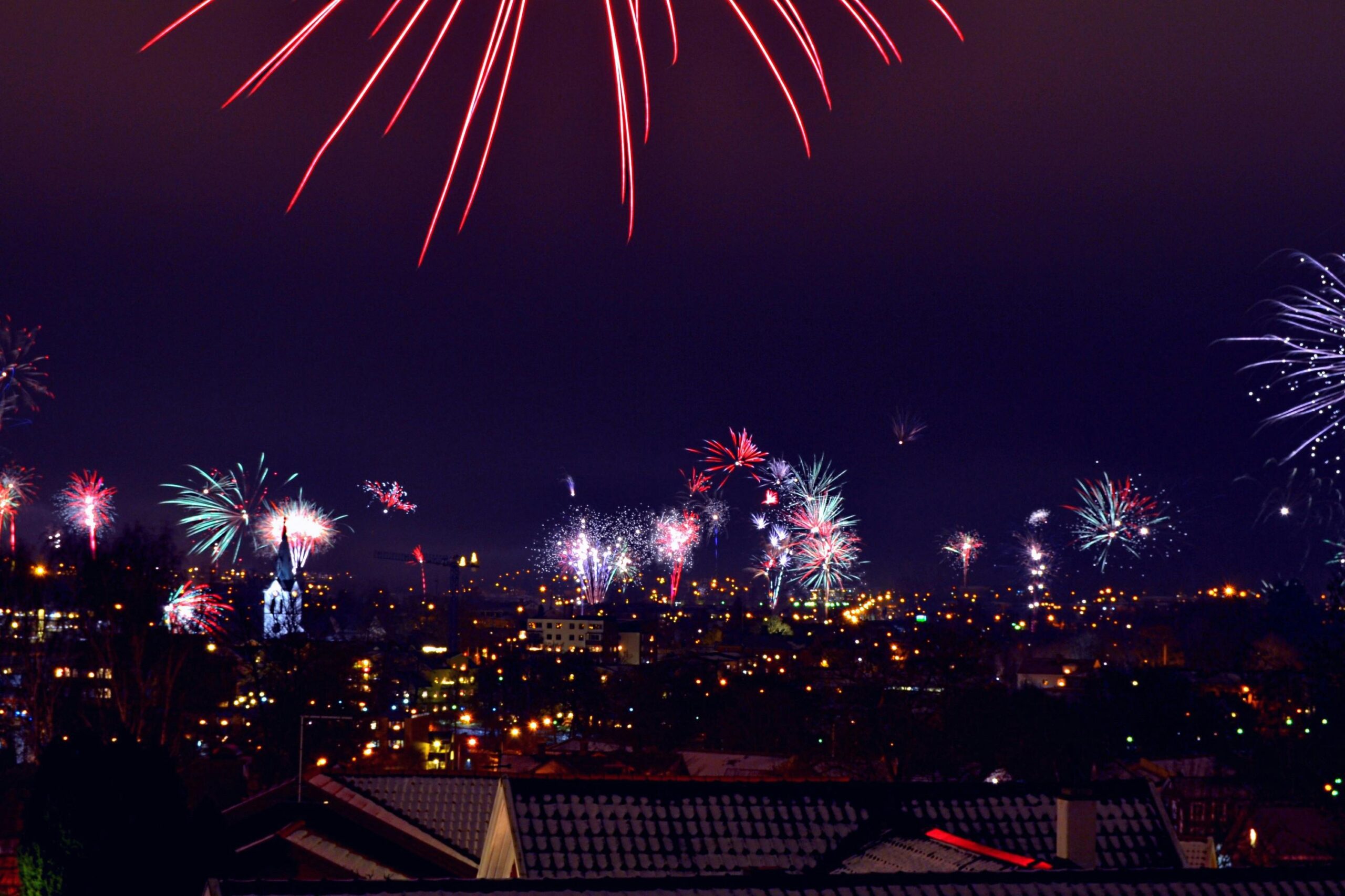- Most of us spend the final seconds of each calendar year watching a nearly 5,440-kilo geodesic sphere descend over Times Square in New York City. Close to 60,000 spectators gather to see the ball drop in person, but if being one of them is on your bucket list, be forewarned: There are no bathrooms, and to get a good view, you’ll likely need to snag your spot ( and holding it) around 3 pm.
- Another Great American New Year’s tradition: watching college football. Four big bowl games will play out over the holiday : the Fiesta Bowl on 31 December, then the Peach, Sugar and Rose Bowls, all on the first of January. The latter is preceded by the Rose Parade through Pasadena, California, with some 50 floats, each adorned with as many flowers as a typical florist sells in five years.
- New Year’s Eve in Scotland is known as Hogmanay. The Scots stretch it into a three day celebration starting with a parade through Edinburgh on 30 December, followed by a housecleaning known as the reding. Then, during ‘first footing’, friends and family visit each other after midnight to become the first to set foot in each other’s homes in the new year. For good luck, the first visitor should be a tall, dark-haired male ( a contrast to the blond Viking invaders of Scotland’s past), toting shortbread, whisky and a lump of coal. So if you find coal in your Christmas stocking, ship it to your friends in Scotland to use a few days later.
- The Scottish song ‘Auld Lang Syne,’ adapted from a poem written in 1788 by Scotsman Robert Burns, is sung just after midnight throughout much of the English-speaking world. Its title translates to ‘old long since,’ and the opening line is “Should auld acquainted be”… though revelers belt out this wrong lyric every year.
- It’s considered good luck in many Spanish-speaking nations to eat 12 grapes or raisins at midnight — one with each clock chime on 1 January. Estonians sometimes superstitiously gorge on 12 meals on the last day of the year. Germans go for marzipan shaped like pigs, thanks to the phrase schwein gehabt (literally, ‘having a pig’), which means having good luck. And the French eat crepes (representing the sun) for brighter days and prosperity in the new year, although they do it slightly later, on 2 February, during a festival called La Chandeleur.
- The First of January is not New Year’s Day for everyone : Chinese New Year will be on 29 January this year; the Tibetan New Year, or ‘Losar’, starts on 28 February; and the Ethiopian New Year falls in September. The Islamic New Year (Muharram) is in June this year, and the Jewish New Year (Rosh Hashanah) will be in late September.
- In Haiti, New Year’s Day is also Independence Day. When Haiti declared independence from France in 1804, it became the first nation in the Western Hemisphere to abolish slavery. To celebrate their nation’s birthday. Haitians swap servings of soup joumou, a pumpkin dish that enslaved Black people were not allowed to have, as it was only for the French masters.
- With 24 Global time zones, the clock strikes midnight 24 different times on New Year’s, first on Kiritimati Island, aka Christmas Island. The island nation celebrates first because it’s almost directly located on the international date line in the Pacific Ocean. American Samoa celebrates nearly a full day later.
- Greeks smash pomegranates, which symbolize renewal in their culture, for New Year’s. But perhaps an even more unusual practice is waking up children on 1 January by tapping them on the head with an onion. Onions represent growth and good health, and after the bulbs hangs from the door on New Year’s Eve, a gentle tap on the head the next morning gets kids moving as the family heads to church.
- In parts of Latin America, including Mexico and Colombia, folks take a lap around the block on New Year’s Eve, dragging an empty suitcase behind them. The superstition is intended to help ensure that the year ahead is filled with travel and adventure.
- Children in the Philippines jump as high as they can on New Year’s at midnight (assuming they’re still awake) in hoped that it will help them grow taller. In Denmark, people jump off chairs or sofas for good luck. And in Brazil, people run into the ocean at midnight and jump over seven waves, each symbolizing a different wish for the year ahead. Water temperatures at that time of year average a balmy 75 degrees Fahrenheit, whereas those who brave the ‘polar bear plunge’ on New Year’s Day in the US and Canada are in for a much chillier dip. But their hearts are in the right place; It raises money for charity.
- Germans traditionally watch a beloved black-and-white British comedy sketch from 1963 1963 called Dinner for One on New Year’s Eve. The slapstick short is about a butler serving a birthday dinner to his employer and her imaginary guests. It airs several times every 31 December in Germany, and the tradition has spread to Austria, Switzerland, and Denmark. But, curiously, it has yet to catch on in England.
- According to a survey from Forbes Health/One Poll, the most popular New Year’s resolution for 2025 was to improve fitness. Another top choice: making more time for loved ones. So find an exercise routine you can do with a partner, and invite a friend or family member to do it with you. Together, your resolve might just carry you through all of 2025.
This website uses cookies. to enhance your browsing experience, serve personalized ads or content, and analyze our traffic. By clicking “Accept & Close”, you consent to our use of cookies. Read our Privacy Policy to learn more.





